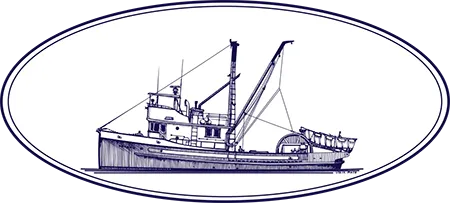Boating is a fun way to spend a summer day that lets you soak up the sun, but taking a boat out on the water requires skill. You have to learn how to move your boat across the water (by rowing, using a motor, or setting sails to catch the wind), and you have to learn how to tie up your boat at the dock when you’re done. To do this, you’ll need to know how to tie different types of knots. While most people only know one or two kinds of knots, boaters need to know at least five different kinds, all of which have different uses.
Bowline Knot
The bowline knot is an essential knot for all sailors that’s often referred to as “the king of the knots.” The bowline knot makes a secure loop at the end of the rope, and it’s easy to tie when you need it and untie when you don’t. It’s often used to tie a line to a piling or to tie two ropes together. Creating a bowline knot is simple and can be done in four easy steps.
- Lay the line across your non-dominant hand, allowing the free end to hang down. Then, form a small loop with the line in the palm of your hand.
- Bring the free end of the line that is hanging down up to and through the loop from underneath. At the end of this step, the line should be coming out of the loop.
- Wrap the line around the standing line (the top part of the line that leads away from you), then feed it back through the loop, this time with the line going down.
- Tighten the knot by pulling hard on the free end while holding onto the line above the loop.
Cleat Hitch Knot
A cleat hitch is important because it’s the best knot to use to tie your boat to a cleat on a dock. The cleat hitch is a sturdy knot that can hold your boat securely in place but isn’t too hard to untie. To tie a cleat hitch:
- Wrap the line around the cleat, underneath the “horns” (the parts that stick out on either side).
- Now, wrap it up and around one side, then up and around the other, creating a figure eight pattern.
- Twist a loop in the line and circle the loop over the first horn, then pull the end of the line tight.
Clove Hitch Knot
A clove hitch is a useful knot if you need to tie a line to a piling or another cylinder-shaped object. It’s pretty easy to tie and easy to adjust, but it can slip, so you shouldn’t use it on its own to tie up something for a long period of time. If you want to tie a clove hitch:
- Wrap the rope around the pole or piling, cross it over itself, and wrap it around again.
- Pull the end around and under itself, then pull it tight.
Half Hitch (Overhand) Knot
The half-hitch knot is a simple knot that you probably already know: It’s the type of knot you make when you start to tie your shoes. It’s not strong enough to use on its own for boating (or even for tying your shoes), but it’s used to start lots of other types of knots. To make a half hitch, you just cross one end of the line over the other, wrap the end around and through the loop, and pull it tight.
Figure Eight Knot
The figure eight knot is one of the strongest knots in boating. It’s a type of stopper knot, a knot that’s tied to make the rope fatter at the end so it won’t slide back through a hole. A figure eight knot gets stronger the more you pull on it, but it’s still pretty easy to untie when you need to. If you want to make a figure eight knot:
- Pass the tail of the rope under itself to create a loop.
- Bring the end of the rope up and over, then put it through the loop.
- Pull the knot tight.
Additional Resources
- Sailing Knots for Beginners
- Seven Essential Knots for Sailors
- How to Tie Three Important Sailing Knots
- Everything About Knots
- Important Knots for Sailors
- Knowing Your Ropes and Knots
- Nautical Knots Guide
- Ten Different Nautical Knots
- Sailing Knots
- How to Tie Popular Sailing Knots
- Animated Basic Knots
- Types of Nautical Knots
- Basic Boating Knots
- Types of Boating Knots According to Their Uses
- Maritime Attorneys
This page was last updated by Douglas R. Williams

